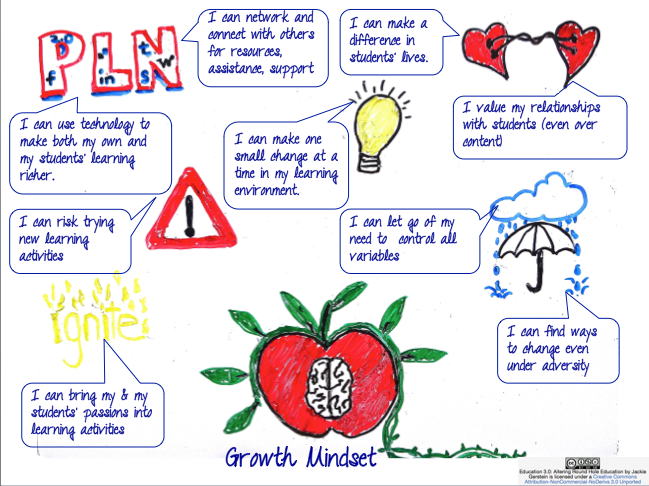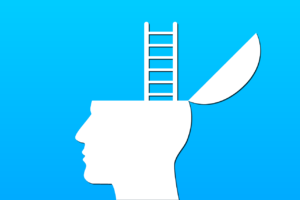“The web influences people’s way of thinking, doing and being, and people influence the development and content of the web. The evolution of the web from Web 1.0 to Web 2.0 and now to Web 3.0 can be used as a metaphor of how education should also be evolving, as a movement from Education 1.0 toward that of Education 3.0. The Web, Internet, Social Media, and the evolving, emerging technologies have created a perfect storm or convergence of resources, tools, open and free information access.” (Jackie Gerstein)

If there is one thing we learned from Monday’s presentation on Web 1.0, 2.0 and 3.0, it’s that the web seems to be changing at a pace that is mind-boggling to comprehend. The first website launched the year I was born, and we are now seeing Artificial Intelligence make its way into our lives. It really makes me wonder if perhaps the millenial generation is seeing more rapid changes in technology than ever before…
With these swift changes in the Web, we also see swift changes in Education happening before our very eyes.
Before we get too far into impacts on today’s education, let’s quickly review the evolution of the web from Web 1.0 to Web 3.0.
Web 1.0 and Education 1.0
John Terra describes Web 1.0 as being “…designed to help people better find information… This web version is sometimes called ‘the read-only Web’ because it lacks the necessary forms, visuals, controls, and interactivity we enjoy on today’s Internet.” In my research for this presentation, I learned that the web was created to allow for scientists to share data across the world. The whole purpose was for free sharing of information.
Now, Jackie Gerstein makes an interesting comparison between each verison of the Web and the evolution of Education. Education 1.0, like Web 1.0, is also about the access of information. Like Web 1.0, teachers were seen as the gatekeepers of information, and would share this information with students. The students, in turn, receive, respond, and regurgitate that information.
This can easily be compared to a behaviourist approach to education. The learners are seen as having no unique characteristics, and their role is to take in the knowledge given by the teacher.
Web 2.0 and Education 2.0
We saw Web 2.0 emerge early in the 2000s. Heather Hall describes Web 2.0 as “…the second generation of the World Wide Web. It focuses on the web as a platform and offers more opportunities for collaboration, functionality, various applications, and user-generated content.” This is often referred to as “the social web,” as we now saw two-way communication.
Jackie Gerstein compares Web 2.0 to Education 2.0. In this “wave” of education, we see learners “communicating, connecting, and collaborating.”
Sydney compared Web 2.0 and Education 2.0 to the constructivist approach. She shared that we can see Education 2.0 in things like project-based learning, inquiry learning, shared blogs, and global learning projects.
Web 3.0 and Education 3.0
Shyamli Jha describes Web 3.0 as being “the concept of the next generation of web, in which most users will be connected via a decentralized network and have access to their own date.” Brianne further explained that in this phase of the internet, users own their own information… meaning that they can choose what can be done with that information. There seems to be more autonomy happening with this version of the web.
Jackie Gerstein tells us that Education 3.0 is “… self-determined, interest-based learning where problem-solving, innovation and creativity drive education.” She explains that Education 3.0 is all about connectors, creators, and constructivists.
Brianne further broke this down by telling the group that these 3 C’s are all nouns for self-determined learners. In this wave of education we are seeing the learners becoming the authors of their learning experiences.
What Impact does the Shift to Web 3.0 Have on Education?
So… now that that’s out of the way… what does impact does this latest shift have on education? In the blog post Education 3.0: Altering Round Peg in Round Hole Education, I read that many educators are reluctant to utlizie Web 3.0 in their classrooms. I myself can relate to this… thinking that I don’t have the time, resources, or the know how. I’ve also become accustomed to the way that I’ve been teaching for the last year, and am not ready to make any changes to that.
But the author of this blog (Jackie Gerstein) explains that this mindset is the result of Education 1.0. Educators have developed a fixed mindset when it comes to the way that we are teaching, and I myself am guilty of this as well. We are hesitant to enter into the unknown. The problem with this is that we need to keep in mind what is best for the student.
Gerstein goes on in her blog to ask the reader, “Do you want to be a whittler or a dream-facilitator?” At the end of the day, we need to find the fine balance between teaching curricular outcomes while also allowing students to take charge of their own learning. Maybe this can be done through passion projects with the use of technology, maybe this can be done by using AI tools to relate these outcomes to things that our students are passionate about. At the end of the day, our job is to do what we can to ensure that the students are put first.
Teachers who are advantaged by Web 3.0 would be those who are newer to the profession and have been honing their craft during the shift from Web 2.0 to Web 3.0. Those who began teaching during the early days of Web 1.0 likely struggled to incorporate tech in their teaching, and this would have become even more difficult as we shifted to online/blended learning during the COVID-19 pandemic.
Students who will be advantaged by Web 3.0 will likely be the same as those who were advantaged by the previous two versions of the web – students who have access to devices and internet both at home and at school. They will have prior knowledge and be able to complete assignments with ease, compared to those who are not as familiar with the web.
This graphic speaks a lot to me. It reminds me that we don’t need to change everything we are doing as we see the impact of Web 3.0 on education. I like to try new things and have my students help me along the way — maybe something new will be a hit, or maybe it will just be a little bit of time lost in the day. We, as educators need to be willing to make these changes (maybe not all at once) and practice what we preach, which is having a growth mindset.






Hey Jenni,
Great work last week presenting this information. I agree with your statement, “I read that many educators are reluctant to utilize Web 3.0 in their classrooms. I myself can relate to this… thinking that I don’t have the time, resources, or the know how.” I feel similar to this but like you discussed, need to have a more of a growth mindset when incorporating these new practices into our daily teaching. I feel the opportunities and student directed learning of Web 3.0 could have a strong impact in our students’ learning in the years to come.
It’s so funny how we teach students about growth mindset and want them to try new things that are scary and tough… but we are so hesitant to do the same!
Hi Peeeke,
Your blog posts are thought-provoking explorations of the changing interaction between online technologies and education, providing valuable insights into the move from online 1.0 to Web 3.0 and its consequences for teaching and learning. The author successfully compares the evolution of the web to developments in educational paradigms, finding striking analogies between the two spheres. By combining insights from diverse sources with personal comments, the content promotes a better understanding of the difficulties and opportunities given by Web 3.0 in educational contexts. Furthermore, the emphasis on cultivating a growth mindset and being open to change emphasizes the value of adaptation and innovation in today’s continuously changing educational scene. Overall, the blog content encourages educators to reflect on existing practices and examine new approaches to effectively meeting the demands of 21st-century learners.
Thenmozhi Babu
Very interesting and engaging post, Jenni!
I thoroughly enjoyed reading your insights. Finding that balance between meeting curricular outcomes and fostering student agency is indeed crucial in creating meaningful learning experiences.
I’m curious, have you encountered any specific strategies or resources that have helped you navigate the transition toward Ed 3.0?
Thanks Michael! Honestly, my biggest strategy has always been to recruit my technologically gifted students and ask them to test things out with me before implementing them in the classroom.
They help teach me how things work from their end, and in the case of Minecraft Ed, the students help each other because I genuinely do not understand how Minecraft works 🙂